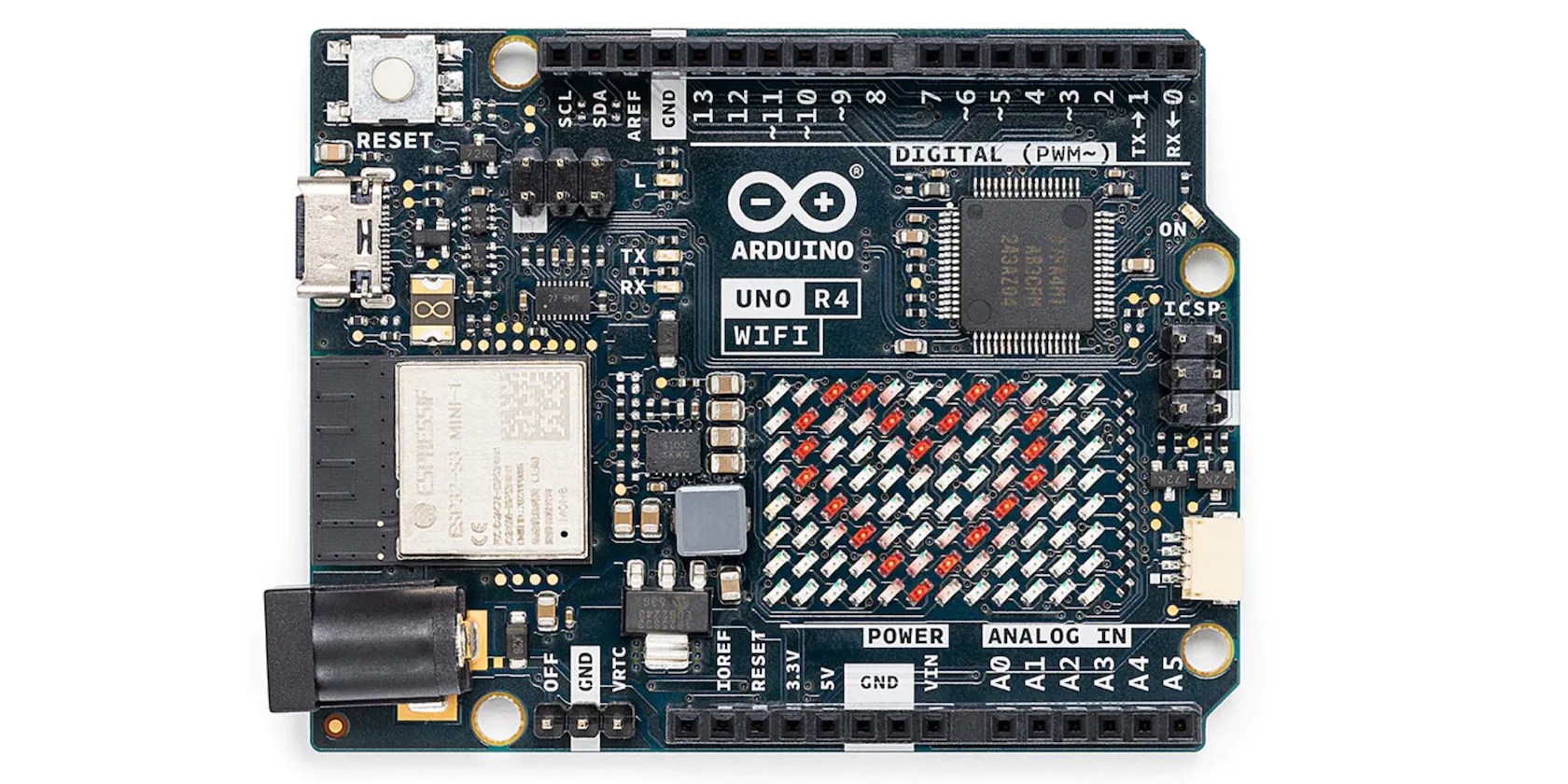Why the New Arduino Uno R4 Is a Game-Changer for Makers
Arduino, the open-source electronics platform that has been empowering hobbyists and makers for over a decade, recently launched its latest addition to the Uno line, the Arduino Uno R4. Building upon the remarkable legacy of its predecessor, the R3 that has been around since 2010, this new is poised to change things for makers.
With a completely new SoC from Renesas, the Uno R4 is a game-changer with capabilities to transform how you will be handling complex projects. But why is this new 32-bit RA4-series MCU about to shake things up?

It Has a More Powerful Processor
If you’ve been using the Arduino platform for some time now, you’ll know there are manydifferent types of Arduino microcontroller, featuring varying capabilities and connectivity. With all the hardware upgrades announced for the Uno R4, it is very likely that it will become the go-to Arduino board for makers.
Most notably, its powerful Renesas RA4M1 (32-bit Arm Cortex-M4) processor operates at an impressive 48MHz. This represents a substantial 3x to 16x increase in processing power compared to the Uno R3. Generally, the Cortex M4 provides higher performance with faster clock speeds and more advanced instruction sets, allowing for more efficient and faster execution of code compared to the previous 8-bit AVR MCU on the Uno R3.

Compared to smaller microcontroller boards like the Raspberry Pi Pico featuring a Cortex M0+, the Cortex-M4 performance is about six times better.
The R4 gives off a similar vibe to the Arduino Zero, having a similar form factor but with a better processor.

Upgraded Storage
With a faster clock speed and expanded memory, you can say goodbye to the all-too-common head-scratching moments of wondering why your code isn’t working, only to discover that it’s because your Serial.print() statements were too verbose for the sluggish MCU, or your colossal array chewed up all the available memory.
In addition, the Arduino Uno R4 benefits from a significantly expanded SRAM (32kB compared to 2kB on the R3) and flash memory (256kb versus 32kB), allowing you to create more feature-rich projects.

Hardware Overhaul
The new board supplies much requested hardware improvements in a similar compact form factor to enable compatibility with existing shields and components. Beefing up the onboard components enables you to do what was only possible with custom boards before.
USB-C and Vin Compatibility
The Uno R4 has a USB-C port for power and programming with a computer, which is a significant upgrade over the previous USB-B port. The fashion for having USB-C ports on Arduino boards was driven by the maker community, leading to this upgrade. Additionally, the Uno R4 supports 24 volts on Vin, making it compatible with a wider range of power sources.
Known for its use in embedded systems, the CAN (Controller Area Network) bus allows you to minimize wiring and execute multiple tasks in parallel by connecting multiple shields. Along with an SPI (Serial Peripheral Interface) port, this should enable more efficient communication between different components of a project.

Improved Digital to Analog Converter (DAC)
The Uno R4 includes a 12-bit analog DAC, providing enhanced accuracy and precision for analog output. Your projects that require precision over analog signals, such as sensor interfacing and motor control, are now upscaled.
HID Device
The majority of contemporary development boards include a HID (human interface device) capability, which the Uno R4 has built-in, while earlier Uno models did not.
You can use the keyboard/mouse API that is integrated into the core to convert your board into an HID. You can go through thedocumentationfor this API to learn more about how this feature works.
Onboard Wi-Fi module
it’s possible to choose from two versions of the board: the Uno R4 WiFi and Uno R4 Minima. The WiFi version features an Espressif S3 Wi-Fi module, ideal for IoT projects or any others requiring wireless connectivity.
Compared to the Minima model, the Uno R4 WiFi variant has the following extra features:
On the other hand, the Uno R4 Minima offers a cost-effective option for those who specifically need the power of the new microcontroller without additional connectivity features.
Software Compatibility and Early Adopter Program
While the new hardware upgrades are impressive, the Uno R4’s software compatibility is equally important. Arduino earlier rolled out theEarly Adopter Programto address any software incompatibilities that may arise due to the move to an Arm-based 32-bit processor. Libraries and examples written exclusively in the Arduino language should work seamlessly with the new board. However, libraries optimized for a specific processor or architecture may need porting.
Fortunately, Arduino is offering free Uno R4 boards to developers who want to update their libraries for the new board. This support from Arduino ensures that the vast library of shields, tutorials, and code developed for the Uno R3 will continue to be available for the new board.
The Next-Gen Board for Makers
The Arduino Uno R4 is a major upgrade to an already impressive line of boards. The new features and higher performance make the Uno R4 more powerful and versatile, while still maintaining compatibility with existing hardware.
The Arduino Uno, Nano, and Pro Mini boards are powered by an ATmega32P microcontroller chip. Here’s what you should know.
OneDrive is one of the best, but it has a catch.
Don’t let someone else take over your phone number.
Anyone with more than a passing interest in motorsports must see these films.
The best features aren’t the ones being advertised.
Tor spoiled me forever.